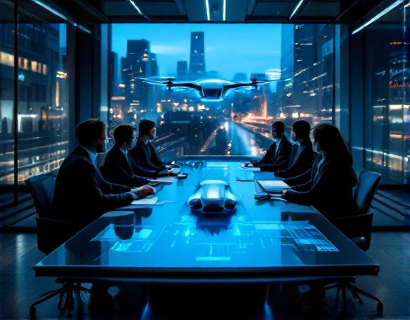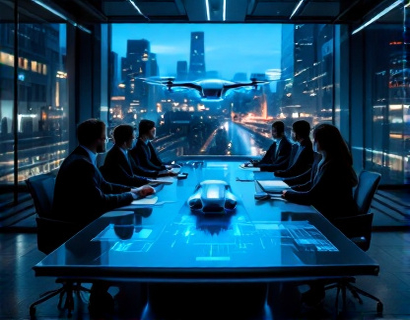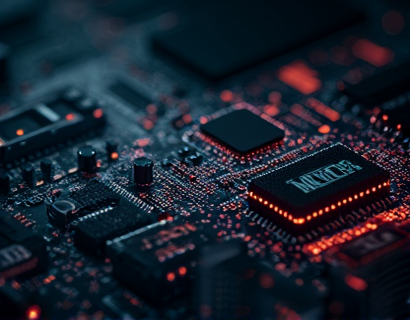AI-Powered Agent Revolutionizes Aeronautics: Streamlining Operations and Enhancing Decision-Making for Industry Professionals
The aeronautics industry, a cornerstone of global transportation and commerce, is undergoing a transformative shift with the integration of artificial intelligence (AI) technologies. This revolution is not just about automating routine tasks but about fundamentally changing how operations are managed and decisions are made. An AI-powered agent, designed with the specific challenges of the aeronautics sector in mind, is at the forefront of this transformation. This agent leverages advanced algorithms, machine learning, and data analytics to streamline operations, enhance decision-making, and drive innovation across the industry.
The aeronautics sector, encompassing airlines, manufacturers, maintenance services, and aviation authorities, faces a myriad of complex challenges. From optimizing flight schedules and managing supply chains to ensuring safety and compliance, the demands are relentless. Traditional methods often struggle to keep pace with the volume and velocity of data, leading to inefficiencies and suboptimal decisions. The introduction of an AI-powered agent addresses these issues head-on, offering a robust solution that adapts to the unique needs of the industry.
Streamlining Operations
One of the primary benefits of integrating an AI-powered agent into aeronautics operations is the significant improvement in process efficiency. The agent can automate routine tasks such as data entry, report generation, and inventory management, freeing up human resources to focus on more strategic activities. For instance, by automating the tracking of aircraft parts and maintenance records, the agent reduces the likelihood of human error and ensures that critical information is always up-to-date.
Moreover, the agent's ability to integrate with existing systems and platforms ensures a seamless transition. It can interface with flight management systems, customer relationship management tools, and supply chain management software, creating a cohesive and interconnected operational environment. This integration not only enhances data flow but also provides a unified view of operations, enabling better oversight and control.
Enhancing Decision-Making
Decision-making in the aeronautics industry is complex and often involves high stakes. An AI-powered agent enhances this process by providing actionable insights derived from real-time data analysis. The agent can process vast amounts of data from various sources, including weather patterns, air traffic control information, and historical flight data, to predict potential issues and suggest optimal solutions.
For example, in flight planning, the agent can analyze current and forecasted weather conditions to determine the most efficient routes, minimizing fuel consumption and travel time. In maintenance scheduling, it can predict equipment failures before they occur, allowing for proactive maintenance and reducing downtime. These capabilities not only improve operational efficiency but also contribute to cost savings and enhanced safety.
Improving Safety and Compliance
Safety is paramount in the aeronautics industry, and an AI-powered agent plays a crucial role in maintaining high standards. By continuously monitoring operations and analyzing data, the agent can identify potential safety risks and alert relevant personnel. This proactive approach helps in mitigating hazards and ensuring compliance with regulatory requirements.
Additionally, the agent can assist in the documentation and reporting processes, ensuring that all safety-related data is accurately recorded and easily accessible. This not only simplifies audits and inspections but also demonstrates a commitment to safety and regulatory adherence, which is essential for maintaining trust with stakeholders.
Driving Innovation
The integration of AI in aeronautics is not just about improving current operations; it is also a catalyst for innovation. The agent can facilitate the development of new services and products by identifying market trends and customer needs. For instance, by analyzing passenger behavior and preferences, the agent can provide insights that inform the design of more comfortable and efficient aircraft interiors or the introduction of new in-flight services.
Furthermore, the agent can support research and development efforts by simulating various scenarios and testing hypotheses. This capability accelerates the innovation cycle, allowing aeronautics companies to bring new technologies and solutions to market faster. Whether it's developing more fuel-efficient engines or advanced avionics systems, the AI-powered agent is a valuable ally in driving technological advancements.
Case Studies and Real-World Applications
Several aeronautics companies have already begun to realize the benefits of AI-powered agents. One notable example is a major airline that implemented an AI system to optimize its flight scheduling and maintenance operations. The system analyzed historical data and real-time inputs to predict the best times for maintenance checks, reducing unexpected delays and improving overall fleet availability. As a result, the airline saw a significant reduction in operational costs and an increase in customer satisfaction.
Another case involves a leading aircraft manufacturer that used an AI agent to enhance its supply chain management. The agent monitored supplier performance, inventory levels, and demand forecasts, providing actionable insights that optimized the procurement process. This led to a more resilient supply chain, better inventory management, and reduced lead times, all of which contributed to the manufacturer's competitive edge.
Challenges and Considerations
While the benefits of AI-powered agents in aeronautics are clear, there are also challenges and considerations that need to be addressed. One of the primary concerns is data security and privacy. The agent must handle sensitive information with the highest level of security to prevent breaches and ensure compliance with regulations such as GDPR and CCPA. Implementing robust security measures and regular audits is essential to maintaining trust and protecting data.
Another challenge is the need for skilled professionals who can effectively integrate and manage AI systems. The aeronautics industry must invest in training and development to build a workforce capable of leveraging these technologies. Collaboration between industry professionals and AI experts can help bridge this gap and ensure that AI solutions are implemented effectively.
Future Prospects
The future of AI in aeronautics is promising, with ongoing advancements in machine learning, natural language processing, and edge computing set to further enhance the capabilities of AI-powered agents. As these technologies mature, we can expect even more sophisticated applications, such as autonomous ground operations and real-time decision support for pilots and ground crews.
Moreover, the increasing adoption of AI across the industry is likely to lead to the development of industry-wide standards and best practices. This standardization will facilitate greater interoperability and collaboration, driving collective progress and innovation. The aeronautics industry stands to gain significantly from these developments, positioning itself at the forefront of the next technological revolution.
In conclusion, the integration of AI-powered agents in aeronautics is transforming the way operations are managed and decisions are made. By streamlining processes, enhancing decision-making, and driving innovation, these agents are not only improving efficiency and safety but also opening new avenues for growth and development. As the industry continues to embrace AI, the potential for further advancements and improvements is vast, ensuring that aeronautics remains a leader in technological innovation.










































